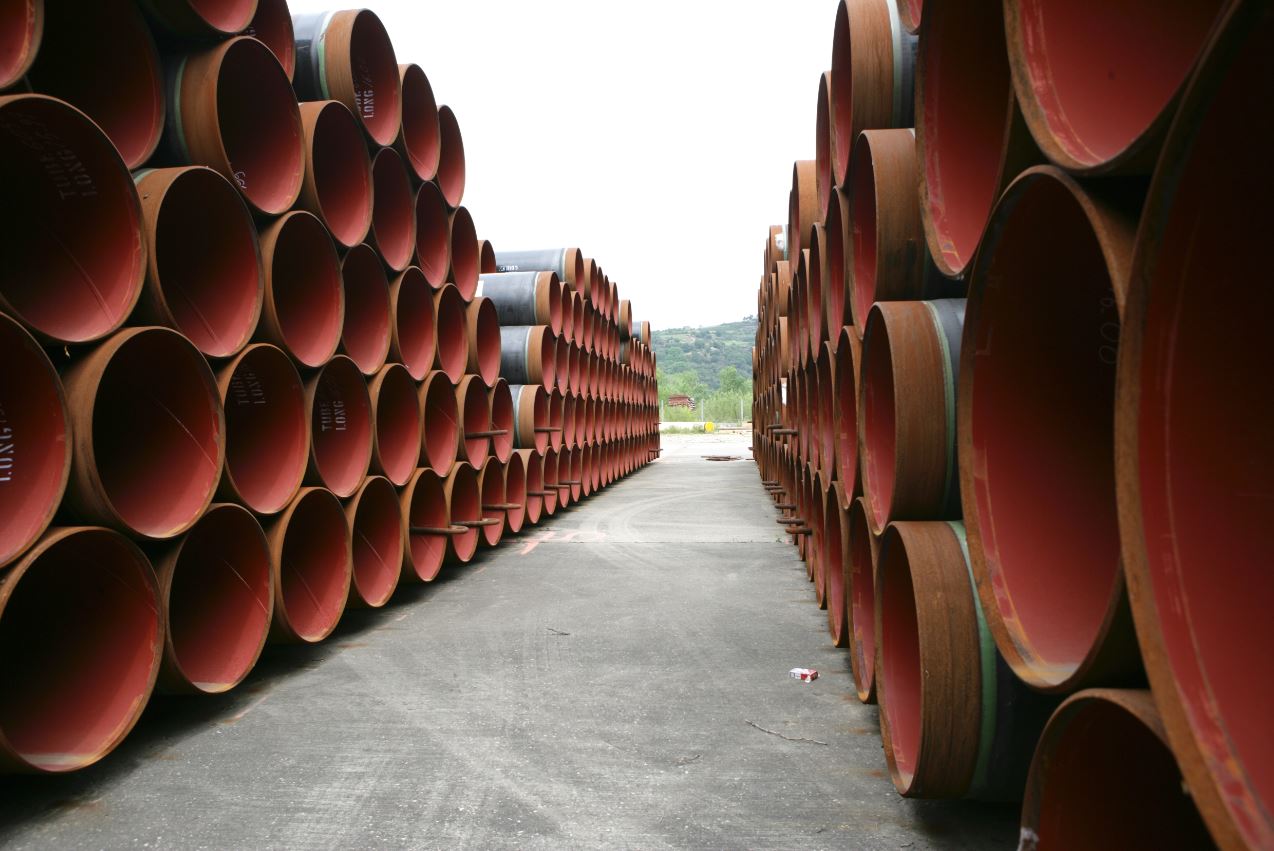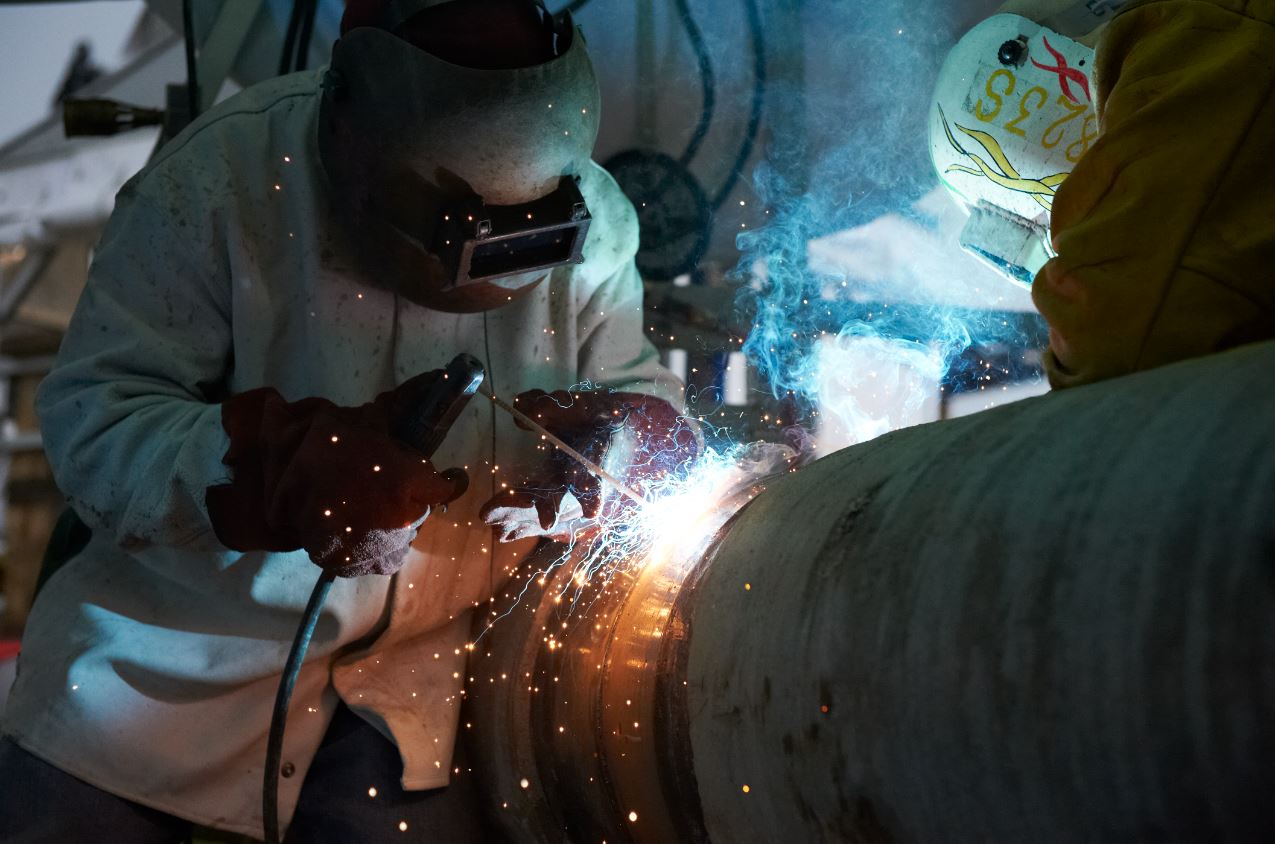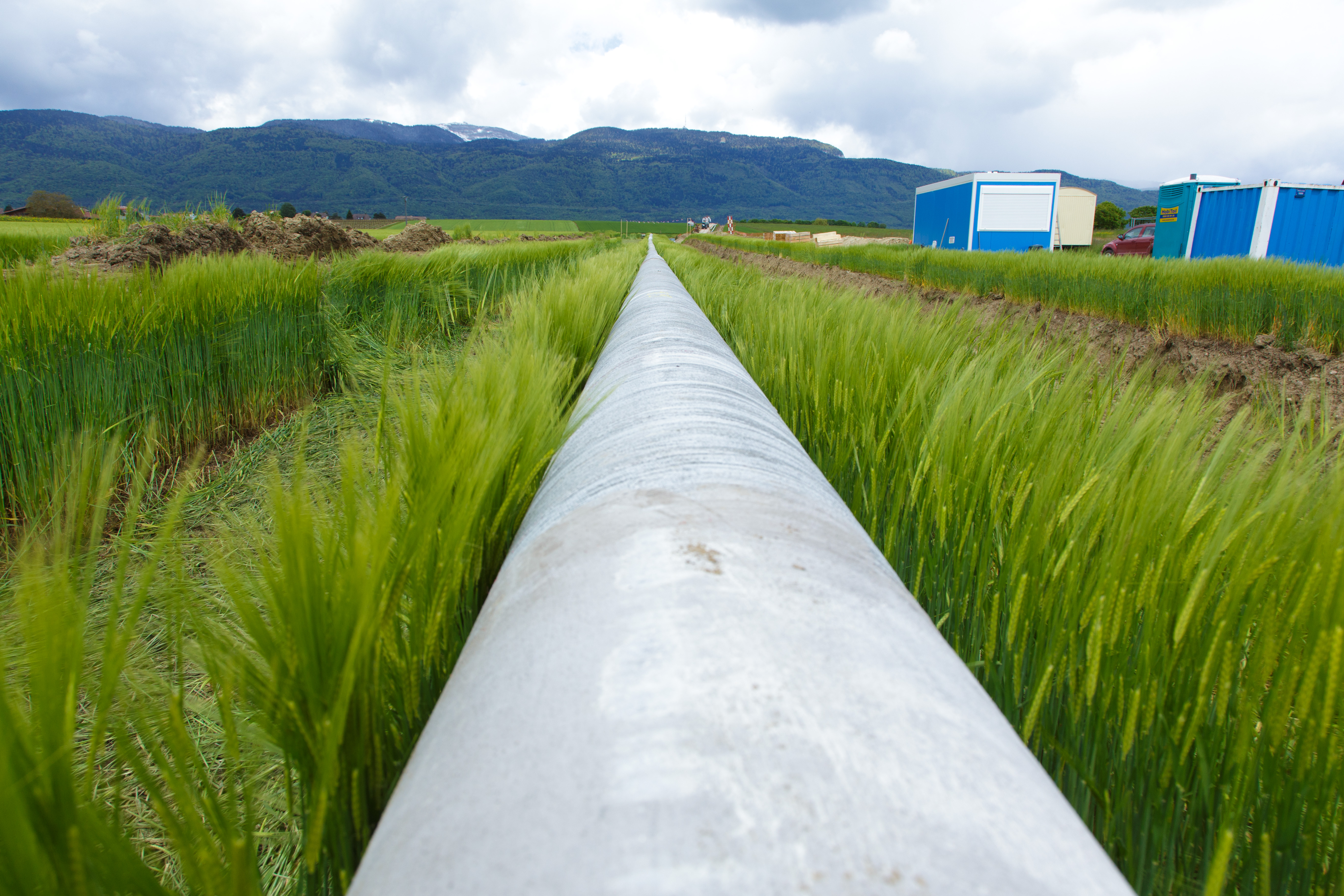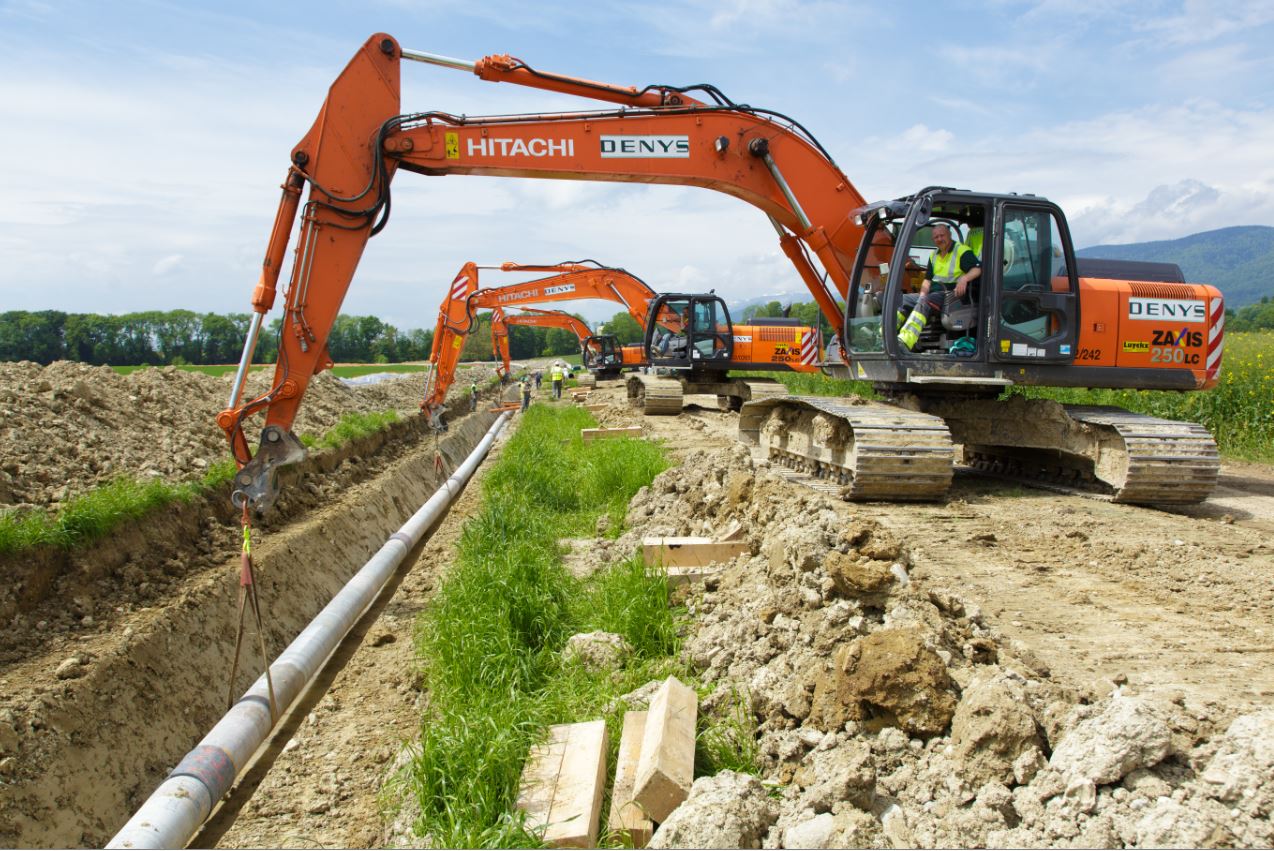Natural Gas Pipeline
A gas pipeline is intended for the transport of gaseous materials under pressure. It is used to transport natural gas between extraction areas and consumption or export areas. The gas is transported at high pressure (from 16 to more than 100 bar) from the field processing sites or storage facilities. The transport networks includes not only pipelines but also :
— Compressor stations located every 80 to 250 km to maintain the pressure of the gas transported and to ensure its progress in the pipelines;
— Interconnection stations, which are important nodes in the transmission network;
— Delivery stations which ensure the delivery of natural gas to the networks downstream of the distribution system. These stations generally perform the functions of expansion, reheating, filtering and metering of the gas. Gas pipelines are made of butt-welded steel pipes, covered with an insulating material (polyethylene) to help protect them from corrosion. They can be hot-bent (in the factory) or cold-bent (when installed in the field).
An alternative form of transportation can be in liquid form. Liquefied natural gas (LNG) is then transported by LNG tankers.

Gas pipelines before installation in the ground

Welding

Gas pipeline before laying

Laying the pipeline

Pipeline after laying,
merely the marker remains visible to indicate the route